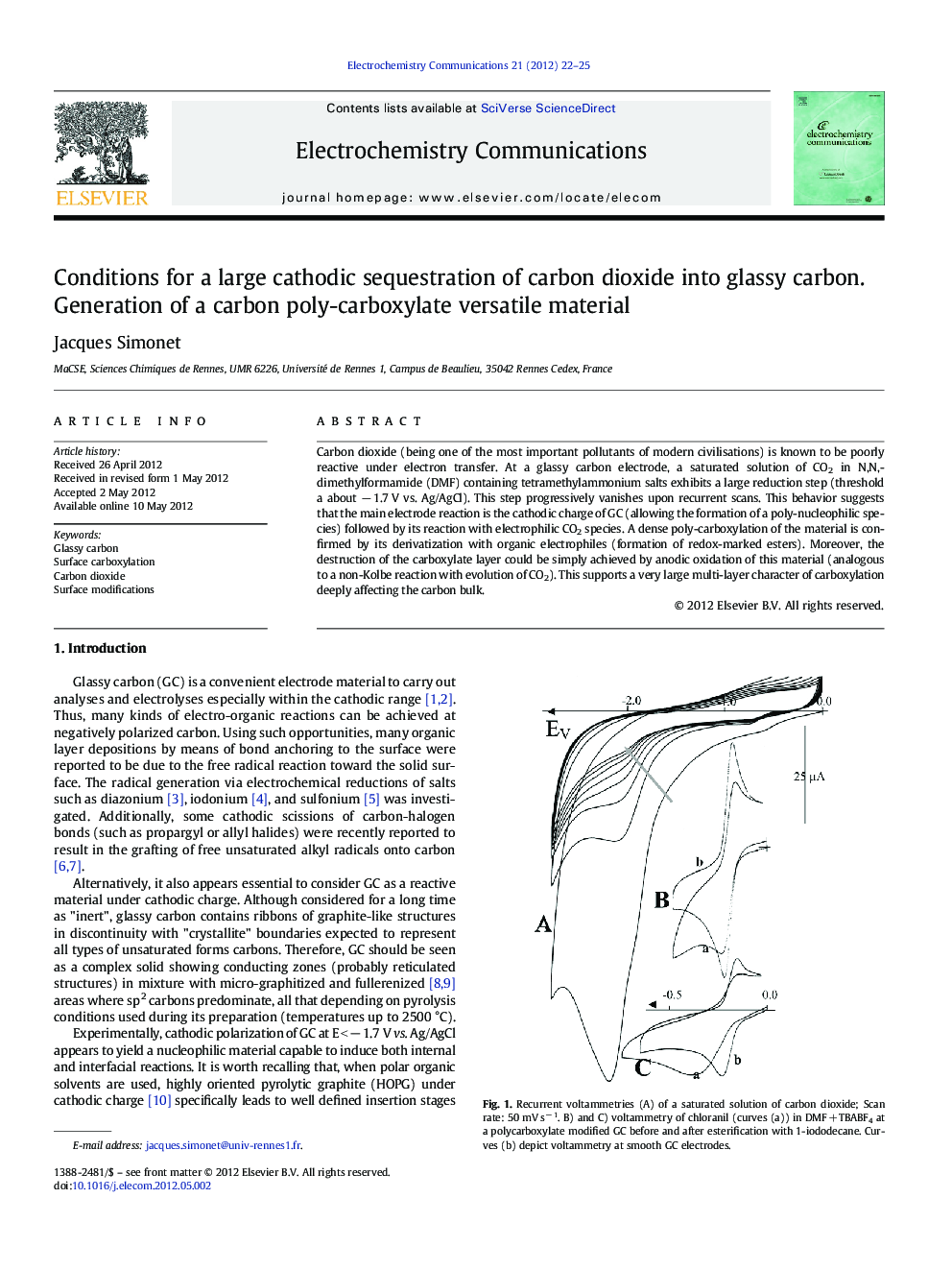| Article ID | Journal | Published Year | Pages | File Type |
|---|---|---|---|---|
| 179440 | Electrochemistry Communications | 2012 | 4 Pages |
Carbon dioxide (being one of the most important pollutants of modern civilisations) is known to be poorly reactive under electron transfer. At a glassy carbon electrode, a saturated solution of CO2 in N,N,-dimethylformamide (DMF) containing tetramethylammonium salts exhibits a large reduction step (threshold a about − 1.7 V vs. Ag/AgCl). This step progressively vanishes upon recurrent scans. This behavior suggests that the main electrode reaction is the cathodic charge of GC (allowing the formation of a poly-nucleophilic species) followed by its reaction with electrophilic CO2 species. A dense poly-carboxylation of the material is confirmed by its derivatization with organic electrophiles (formation of redox-marked esters). Moreover, the destruction of the carboxylate layer could be simply achieved by anodic oxidation of this material (analogous to a non-Kolbe reaction with evolution of CO2). This supports a very large multi-layer character of carboxylation deeply affecting the carbon bulk.
Graphical abstractFigure optionsDownload full-size imageDownload as PowerPoint slideHighlights► Electrochemical method for sequestrate carbon dioxide. ► Simple method for carboxylating glassy carbon. ► Carbon poly-carboxylate as a new material easily cathodically generated and functionalized. ► Carbon dioxide sequestration modulated according to the applied potential.
